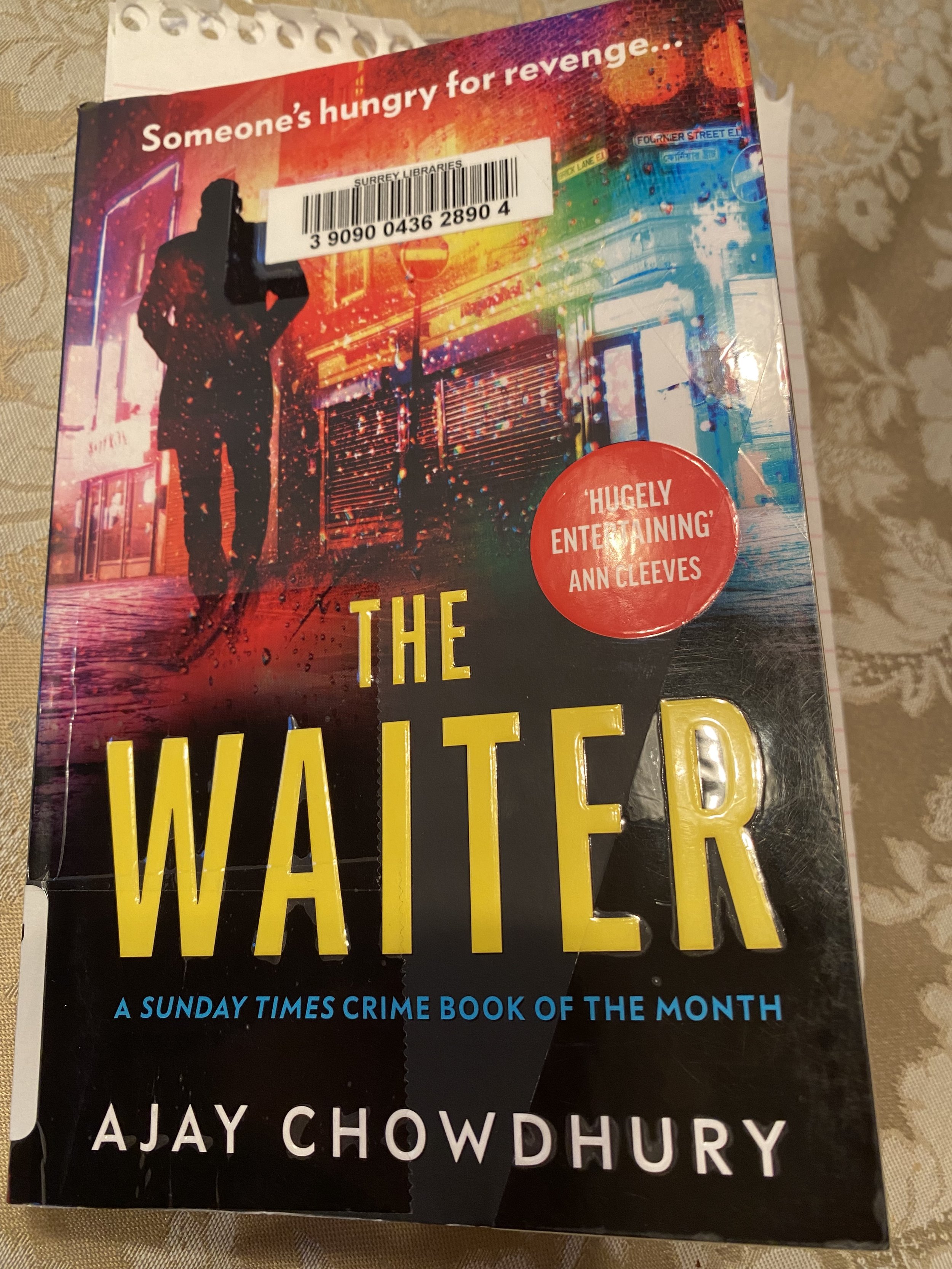The Waiter by Ajay Chowdhury
Kamil Rahmin, recently arrived in London from Kolkata, is staying with friends in Brick Lane and working as a waiter in their restaurant. “Tandoori Knights,” the sign proclaims, “Keep calm and Curry on!”
Unable to return to India, but with only a short-term legal status in England, Kamil feels “stuck between two countries,” neither of which wants him. Before getting thrown out of the Kolkata police, he used to be an idealistic young detective. When n London he finds himself close to a murder, he can’t resist the temptation to investigate.
Chowdhury’s tale is entertaining not least for his use of language. In addition to snappy dialogue, he treats us to lush and often hilarious images that reveal setting, plot and character with precision and clarity. One surprising sentence includes this unexpected combination of words: love, marriage and suicide.
Clever turns of phrase abound. The Sharma mansion is a “vast and opulent padded cell.” The young woman who occupies it “went from Primark to Prada in 12 months.” Her friend thinks she’s cool, in spite of her taste, which she summarizes as “Bollywood meets Iraqui dictator.”
At the party that ends in murder, the man celebrating his birthday is described as “a walrus wearing Savile Row.” The festivities include a “banghrafied rendition of Happy Birthday.”
Tandoori Knights is not the only hilariously named business. On our travels through the book we also pass Amy’s Winehouse, Jack the Clipper and Cereal Killer. In a lighthearted reference to the Indian heritage of the characters, Kamil’s employer and landlord believes “Indians invented all the splendid things — shampoo and soap and zero and chess.”
Musical allusions abound, as when Kamil broods over his displacement while Paul McCartney’s song gives him advice that is impossible: get back to where he once belonged.
Son of the retired Commissioner of police in Kolkata, Kamal is a man of mixed cultures and heritage. “English educated and Bengali and Muslim,” he joined the police hoping to see justice done and “eager to be part of the thin line between order and anarchy.” In spite of his excellent education, the recently arrived Kamil’s is teased for mishearing a barista as a barrister.
The novel is sprinkled with jokes and references for attentive mystery readers. Chowdhury alludes to Agatha Christie and gives a nod to Vaseem Khan, a fellow member of the Red Hot Chilli Writers, rivalling Khan’s graphic moustache descriptions with one of his own that involves a dead caterpillar.
True to the trope, the Muslim-raised Kamil is aided in his investigations by the British born daughter of the Hindu couple he is staying with. Anjoli too is educated and clever. Working at jobs well below the level of her skills and talents, she rebels by creating T-shirts with feminist and political slogans like “The first Brexit was in 1947.” Disgusted with the “illegible” suitors her mother insists on introducing, she is eager to help Kamil solve the crime that occurs so close to both of them.
Thematically, Chowdhury weaves into his story some of the problems of our contemporary world, portraying the gaps between classes and religions, rich and poor, local and immigrant. We also see, through Kamil’s eyes, how civil servants are the same the world over. When he is obliged to report to immigration after someone reports him for working illegally in the UK, the “small, dusty-looking man” who interviews him evokes memories of “the squad room in Lal Bazaar.” Justifiably nervous in the crowded waiting room of the immigration office, he is surrounded by “couples dandling children on their knees, children dandling babies on their knees, and men dandling iphones.” All these people, who are of many nationalities, wear “a similar expression of forlorn nervousness” that mirrors Kamil’s own.
Through the matter-of-fact voice of Kamil Rahman, readers witness how both London and Kolkata are mired in deep socio-economic and cultural divisions that divide people from their neighbours.
Basically, to use one of Kamil’s favourite expressions, this novel a great read. Pacey, well-plotted and spiced with flashes of humour, it is also thematically weighty, provoking thought and enlightening readers while it entertains them.

